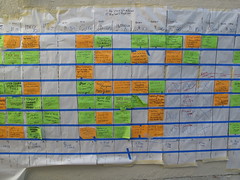
While pondering installing Visual Studio 2010, as well as thinking how all software is moving to a subscription basis, I had the thought – why not do two predictable releases a year? The first release, say in January, would be whatever new features were in place by that date. The second release, say in July, would be a pure performance and usability release, as the development team would spend half the year optimizing and tweaking the code, as well as fixing all bugs. Any new “Features” would have at least six months to cook in the minds of the developers and would be implemented on a much stronger code base. Continue reading →
Thoughts on predictable software scheduling
25
Feb 10
Written By Steve French
Stalin on the road to Barbarossa
I just finished reading L.A. Noir by John Buntin, a history of the Los Angeles Police Department, and was struck by the similarity of Stalin’s reaction to the German invasion of 1941 and the Police Chief Thomas Parker’s reaction to Watts riots in the 1960s.
First some history – in 1941 Nazi Germany launched Operation Barbarossa – an invasion of the Soviet Union. At first the Germans took far more territory than expected. One of the primary reasons for the success, if not the primary reason, is that during the first days of the invasion Stalin refused to believe the invasion was happening and did not mobilize the Red Army. Once he realized that the Germans were actually invading he seemingly had a nervous breakdown and did nothing at all. As Stalin micromanaged the Soviet Union to the finest detail, his paralysis meant that Red Army did nothing while the Germans rolled across the border. It took a matter of weeks before he was able to start issuing even halfway decent military orders again. Continue reading →
15
Jan 10
Written By Steve French